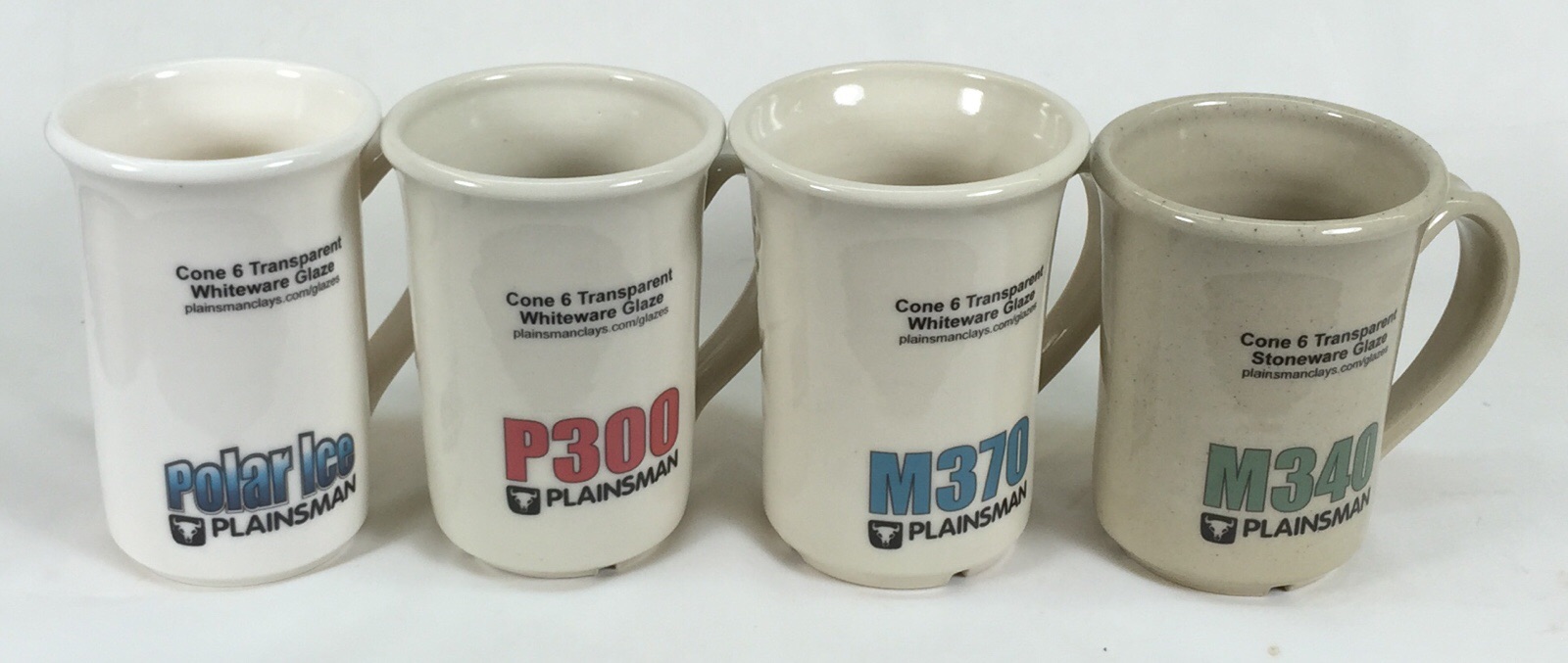Porcelain and Whiteware Bodies - Plainsman

Plainsman Polar Ice, P300, M370 and M340 with G2926B Whiteware transparent glaze on the porcelain (G2916F Stoneware transparent on the M340).
Compared to Bodies Made From Our Native Materials
These bodies are all made entirely from refined imported industrial minerals using a batching process (compared to the continuous process for our native bodies). They are whiter and cleaner than any of our natively mined materials. That means you can make ware that would be impossible with our stonewares. We must be extra vigilant in monitoring these materials for changes in properties (since we do not control their production) and adjust as needed so that you, the end user, get a consistent product. Porcelains are much more expensive (some bodies employ materials that must be shipped thousands of miles, even across the ocean).
Working Properties
Because we add bentonite to all of our porcelains we can make them just as plastic, or more plastic, than our native bodies. However, this means that they do not dry as well, extra care is needed (dry ware evenly). The dry strength is also much lower.
Firing Properties
Porcelains are much more vitreous than our stonewares, so take measures to prevent warping (ware shape and cross section is very important). Over fire porcelains at your own risk. Porcelain foot rings can stick to the kiln shelf if inadequate wash or sand are used. None of our porcelains are guaranteed to fire completely speck-free, although they most often will (our entire plant would have to be totally dedicated to porcelain production 100% of the time to guarantee this).
Glazing
Porcelains craze glazes more than stonewares and crazing severely cuts ware strength. Consider using the base recipes on our glazes page and variegate, opacify and color them. Many of our Alberta Slip and Ravenscrag Slip recipes work well on porcelains.
Being Realistic
Our porcelains are made from materials we do not control. Not infrequently we have had to discard entire semi-trailer loads of contaminated imported product (at great expense). We test these materials and adjust for their variations as much as possible. We clean our plant impeccably before porcelain runs and exercise the highest possible level of diligence during production. However you may still encounter some isolated fired specks. The only way it would be possible for us to guarantee a speck-free result would be to dedicate our plant to nothing but porcelain production, batch mix materials as a slurry, pump these through 120 mesh or less screens, dewater via filter press, remix the filter cakes in a stainless steel premixer and finish in a stainless steel pugmill. We do not do any of these things. However, because of the levels of plasticity (and associated stickiness) in pottery porcelains it would not be practical or even possible to slurry, screen, dewater or premix them. Another issue is laminations in the slug, these are often visible after aging, so wedging is a must. Porcelains also change stiffness more in the box as they age (it is much easier for customers to air or plaster stiffen a too-soft clay than soften a too-stiff one). If the pugged material gets quite old you may note color patches on the surface or cut surface (often a grey color) or even grey blotches. Simply wedging the material will restore it to good working form.
